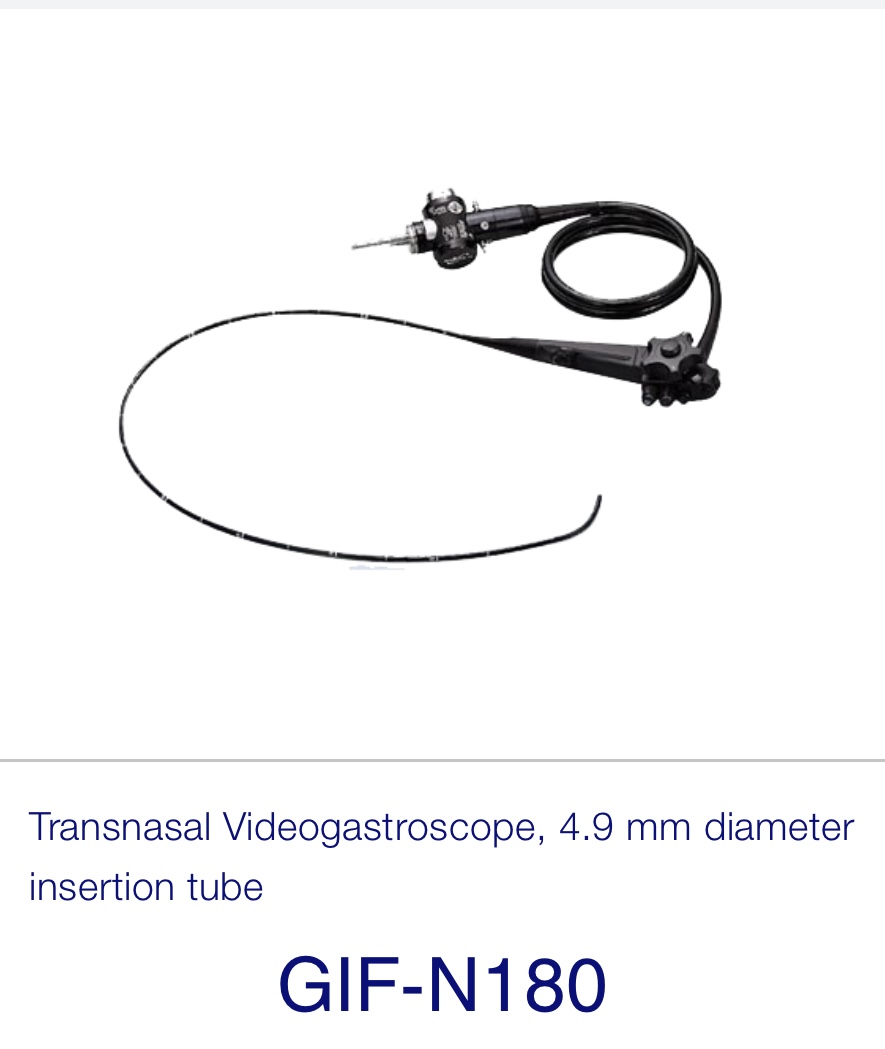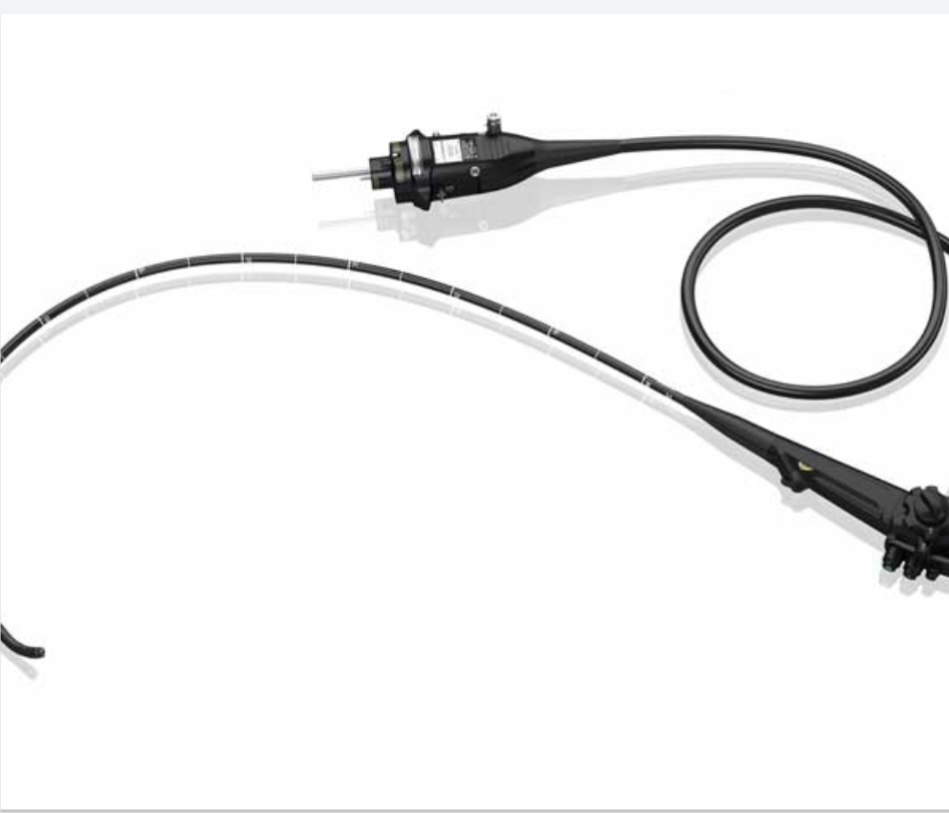Tuesday Poster Session
Category: General Endoscopy
P5172 - Ambulatory Ultrathin (4.9mm) Trans-Nasal Endoscopy With Low-Dose Propofol-Assist to Overcome Gag Reflex/Nasal Discomfort in High Anesthesia-Risk Patients: A Case Series
Tuesday, October 28, 2025
10:30 AM - 4:00 PM PDT
Location: Exhibit Hall

Nikhil Vasireddi, MD, MHA (he/him/his)
University of Iowa Hospitals & Clinics
Iowa City, IA
Presenting Author(s)
Award: ACG Presidential Poster Award
Nikhil Vasireddi, MD, MHA1, Neal Vasireddi, BS MEng2, Meena Kumari Bellamkonda, MBBS3, Srinivas S. Vasireddi, MD4
1University of Iowa Hospitals & Clinics, Iowa City, IA; 2Robert Wood Johnson Medical School, Rutgers University, Holmdel, NJ; 3Aiken Regional Medical Centers, Metuchen, NJ; 4advanced digestive center Inc, Metuchen, NJ
Introduction: Unsedated trans-nasal diagnostic upper endoscopy is a safe and cost-effective option for high anesthesia risk patients. However, some patients may have a strong gag reflex or severe nasal discomfort, classical contraindications to transnasal endoscopy. We present a series of nine high anesthesia risk patients in which a low-dose propofol-assisted approach allowed us to successfully and safely circumvent the patient’s strong gag reflex/nasal discomfort to complete the transnasal upper endoscopy in an office-based setting.
Case Description/
Methods: We identified 9 consecutive patients (mean age 67, ASA score 3, BMI 33, 7 males and 2 females) from December 2024 - May 2025, who underwent ambulatory low-dose propofol-assisted transnasal upper endoscopy with an ultrathin 4.9 mm Olympus 180 series scope (Image 1), indicated for treatment refractory GERD. All 9 patients were initially scheduled for unsedated ambulatory ultrathin transnasal endoscopy. Despite topical anesthetic, they experienced strong nasal discomfort or gag reflex, precluding esophageal passage. The scope was withdrawn and patients were then consented for low-dose propofol sedation to facilitate esophageal passage. Five patients underwent trans-nasal intubation, while the remaining four had oral intubation. Anesthesia was carefully titrated to minimum effective levels. All transnasal endoscopies were completed uneventfully, without complications through one month follow-up.
Discussion: These findings suggest that low-dose propofol sedation, combined with the ultrathin trans-nasal endoscope, can be safely performed in ambulatory settings, mitigating the limitations of nasal sensitivity and gag reflex, while also minimizing anesthesia risk. Ultrathin (4.9mm) scopes significantly reduce the risk of oropharyngeal airway compromise compared to larger transnasal endoscopes (Image 2). Additionally, the smaller scope size and low dose propofol theoretically both reduce vagal stimulation, contributing to a lower risk of cardiopulmonary complications. This approach may be particularly beneficial in office-based endoscopy, minimizing anesthesia-related risks while ensuring successful completion of the procedure.

Figure: Image 1. GIF-N180 Transnasal Videogastroscope, ultraslim 4.9 mm diameter

Figure: Image 2. GIF-H190N EVIS EXERA Ill Transnasal Videogastroscope 5.4 mm diameter.
Disclosures:
Nikhil Vasireddi indicated no relevant financial relationships.
Neal Vasireddi indicated no relevant financial relationships.
Meena Kumari Bellamkonda indicated no relevant financial relationships.
Srinivas Vasireddi indicated no relevant financial relationships.
Nikhil Vasireddi, MD, MHA1, Neal Vasireddi, BS MEng2, Meena Kumari Bellamkonda, MBBS3, Srinivas S. Vasireddi, MD4. P5172 - Ambulatory Ultrathin (4.9mm) Trans-Nasal Endoscopy With Low-Dose Propofol-Assist to Overcome Gag Reflex/Nasal Discomfort in High Anesthesia-Risk Patients: A Case Series, ACG 2025 Annual Scientific Meeting Abstracts. Phoenix, AZ: American College of Gastroenterology.
Nikhil Vasireddi, MD, MHA1, Neal Vasireddi, BS MEng2, Meena Kumari Bellamkonda, MBBS3, Srinivas S. Vasireddi, MD4
1University of Iowa Hospitals & Clinics, Iowa City, IA; 2Robert Wood Johnson Medical School, Rutgers University, Holmdel, NJ; 3Aiken Regional Medical Centers, Metuchen, NJ; 4advanced digestive center Inc, Metuchen, NJ
Introduction: Unsedated trans-nasal diagnostic upper endoscopy is a safe and cost-effective option for high anesthesia risk patients. However, some patients may have a strong gag reflex or severe nasal discomfort, classical contraindications to transnasal endoscopy. We present a series of nine high anesthesia risk patients in which a low-dose propofol-assisted approach allowed us to successfully and safely circumvent the patient’s strong gag reflex/nasal discomfort to complete the transnasal upper endoscopy in an office-based setting.
Case Description/
Methods: We identified 9 consecutive patients (mean age 67, ASA score 3, BMI 33, 7 males and 2 females) from December 2024 - May 2025, who underwent ambulatory low-dose propofol-assisted transnasal upper endoscopy with an ultrathin 4.9 mm Olympus 180 series scope (Image 1), indicated for treatment refractory GERD. All 9 patients were initially scheduled for unsedated ambulatory ultrathin transnasal endoscopy. Despite topical anesthetic, they experienced strong nasal discomfort or gag reflex, precluding esophageal passage. The scope was withdrawn and patients were then consented for low-dose propofol sedation to facilitate esophageal passage. Five patients underwent trans-nasal intubation, while the remaining four had oral intubation. Anesthesia was carefully titrated to minimum effective levels. All transnasal endoscopies were completed uneventfully, without complications through one month follow-up.
Discussion: These findings suggest that low-dose propofol sedation, combined with the ultrathin trans-nasal endoscope, can be safely performed in ambulatory settings, mitigating the limitations of nasal sensitivity and gag reflex, while also minimizing anesthesia risk. Ultrathin (4.9mm) scopes significantly reduce the risk of oropharyngeal airway compromise compared to larger transnasal endoscopes (Image 2). Additionally, the smaller scope size and low dose propofol theoretically both reduce vagal stimulation, contributing to a lower risk of cardiopulmonary complications. This approach may be particularly beneficial in office-based endoscopy, minimizing anesthesia-related risks while ensuring successful completion of the procedure.

Figure: Image 1. GIF-N180 Transnasal Videogastroscope, ultraslim 4.9 mm diameter

Figure: Image 2. GIF-H190N EVIS EXERA Ill Transnasal Videogastroscope 5.4 mm diameter.
Disclosures:
Nikhil Vasireddi indicated no relevant financial relationships.
Neal Vasireddi indicated no relevant financial relationships.
Meena Kumari Bellamkonda indicated no relevant financial relationships.
Srinivas Vasireddi indicated no relevant financial relationships.
Nikhil Vasireddi, MD, MHA1, Neal Vasireddi, BS MEng2, Meena Kumari Bellamkonda, MBBS3, Srinivas S. Vasireddi, MD4. P5172 - Ambulatory Ultrathin (4.9mm) Trans-Nasal Endoscopy With Low-Dose Propofol-Assist to Overcome Gag Reflex/Nasal Discomfort in High Anesthesia-Risk Patients: A Case Series, ACG 2025 Annual Scientific Meeting Abstracts. Phoenix, AZ: American College of Gastroenterology.

